Thirst: In Search of Freshwater, 2025
▣ TYPE: Exhibition
▨ CLIENT: Wellcome Collection
▤ KEY MATERIALS: Wetland fibre board / Wheat fibre board / Hemp bio-resin board / Reed / Straw / Rush / Sedge / Re-used timber
▦ METHODOLOGY: Material research / 1:1 prototyping / Circular Economy
▥ COLLABORATORS: Wolfe Hall / Mollie McMillen / Mark Harrington / MER / Zelfo / Loam Project
Material Cultures is pleased to announce its partnership with Wellcome Collection on the design of 'Thirst: In Search of Freshwater', a major new exhibition opened on 26 June 2025. Developed in collaboration with Wolfe Hall, the exhibition explores humanity’s vital connection with freshwater.
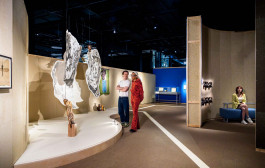
The cultural sector produces high levels of waste as a result of its temporary, ever-changing installations. These exhibitions are produced using metal studs, plasterboard, MDF, plywood and plastics: materials that are carbon intensive to produce, include lots of glues, offgas different chemical compounds and that are difficult to reuse or recycle. Huge volumes of these short-lived materials are then sent immediately to landfill.
A fundamental focus of our design proposal has been the substitution of carbon intensive technical materials with regenerative resources and materials from the biosphere, as well as the reuse of materials and furniture from past exhibitions.
The design explicitly centres innovative plant-based materials grown in wetlands, that depend on water and also foster wetland ecosystems in return. These plant-based materials absorb and store natural carbon, and are an excellent substitute to the petro-chemical based materials that dominate the construction industry.
The thatched display to the entrance is a showcase of the many wetland plants used to produce innovative sheet materials used through the exhibition. The thatched wall includes UK-sourced plants such as reeds, rushes and grasses bound together by master thatcher Mark Harrington and expert weaver Mollie McMillen. The temporary walls inside the gallery are lined with boards made from wetland fibres, hemp, wheat and straw. The signage in the entrance and in the gallery is stoneware made with London clay pigment collected from SW2.
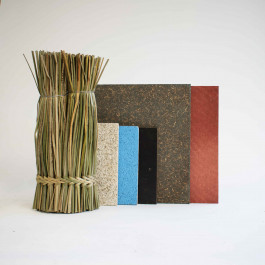
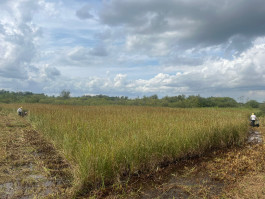
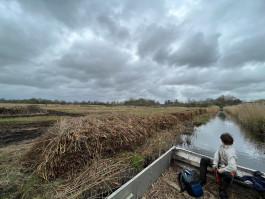
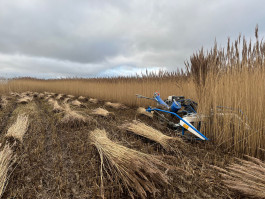
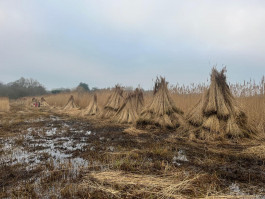
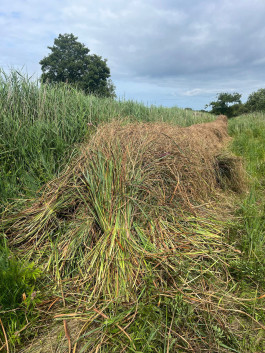
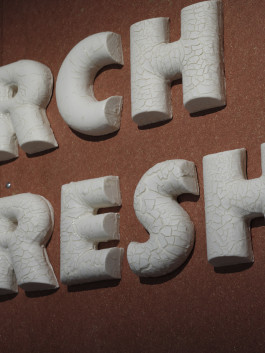
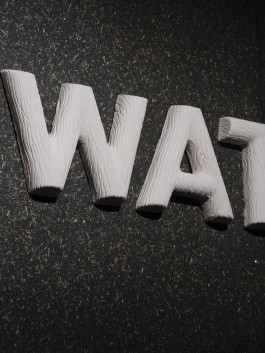
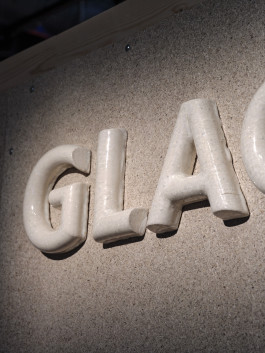
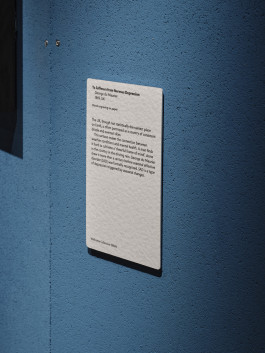
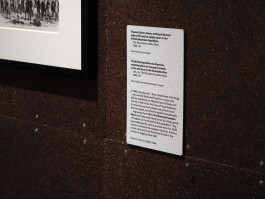
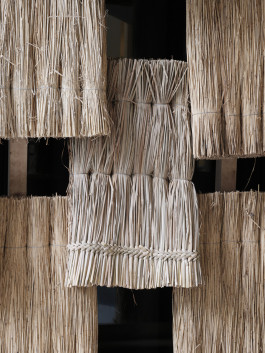
Straw Mineral Board
This biobased strawboard from German manufacturer Strohplattenwerk Müritz uses mineral binders instead of toxic, synthetic adhesive used in conventional industry, enabling different plant fibres to be employed in insulation and furnishing.
Wetland and Wheat Fibreboard
Brandenburg-based Zelfo uses an innovative technology to break down plant fibres at a microscopic level, so they bind together tightly. These boards, contained of wetland plants and wheat straw respectively, are solely bound together by physical compression, free of any chemical binding agents, making it fully bioregenerative.
Hemp Bio-resin Board
Industrial hemp matures in 100 days, requires minimal water and needs no pesticides. Its high cellulose content also makes it an excellent wood alternative. UK-based Loam Project crafts hemp boards with agricultural waste sugar resin, which lighten over time like timber.
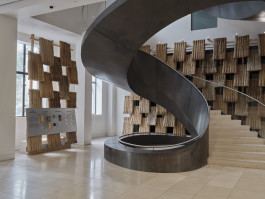
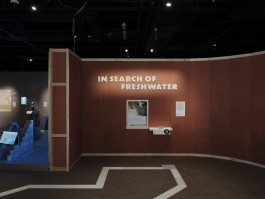
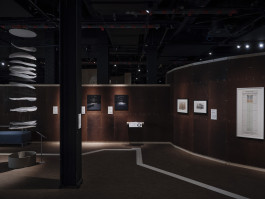
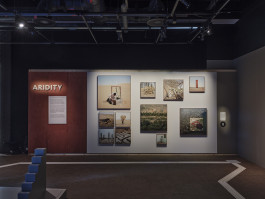
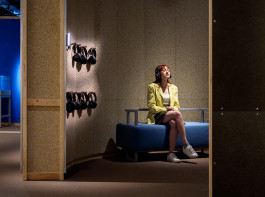
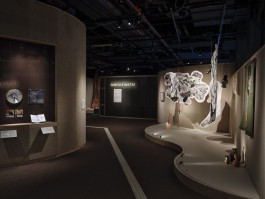

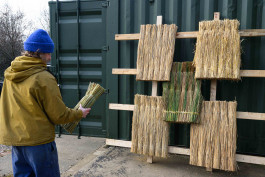
Reed
Reed is one of the world’s most widely grown wetland plants. Low moisture reed harvested in winter lends itself as raw material for craft and construction. A reed roof can last for 50 -100 years. It is also used as water treatment system.
Sedge
Sedge thrives in moist habitats such as bogs, brackish water marshes, and mountain meadows. An important food source within the wetland ecosystem, it was also a valuable crop and roof ridge material in Middle Ages Britain, as well as weaving and medicinal ingredients within indigenous communities in North America.
Willow
Willow relies heavily on a continuously moist environment and is key to support the survival of many woodland insects and invertebrates. It can be used for shelter construction, basket production and stabilising riverbanks. Salicylic acid, a key ingredient in aspirin, is extracted from willow bark.
Wheat straw
Wild cereals like wheat have been grown in the UK for at least 7000 years. Cereal farming occupies 71% of local agriculture, producing 7 million tonnes of straw annually. Nearly half is sequestered atmospheric carbon. Building with straw offers a cost-effective and functional solution for carbon storage.
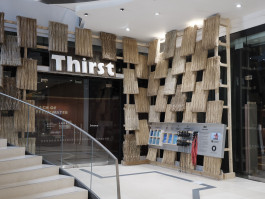
Photography by Thomas Adank, Benjamin Gilbert and Brett Fransham.
Thirst: In Search of Freshwater, 2025
▣ TYPE: Exhibition
▨ CLIENT: Wellcome Collection
▤ KEY MATERIALS: Wetland fibre board / Wheat fibre board / Hemp bio-resin board / Reed / Straw / Rush / Sedge / Re-used timber
▦ METHODOLOGY: Material research / 1:1 prototyping / Circular Economy
▥ COLLABORATORS: Wolfe Hall / Mollie McMillen / Mark Harrington / MER / Zelfo / Loam Project
Material Cultures is pleased to announce its partnership with Wellcome Collection on the design of 'Thirst: In Search of Freshwater', a major new exhibition opened on 26 June 2025. Developed in collaboration with Wolfe Hall, the exhibition explores humanity’s vital connection with freshwater.

The cultural sector produces high levels of waste as a result of its temporary, ever-changing installations. These exhibitions are produced using metal studs, plasterboard, MDF, plywood and plastics: materials that are carbon intensive to produce, include lots of glues, offgas different chemical compounds and that are difficult to reuse or recycle. Huge volumes of these short-lived materials are then sent immediately to landfill.
A fundamental focus of our design proposal has been the substitution of carbon intensive technical materials with regenerative resources and materials from the biosphere, as well as the reuse of materials and furniture from past exhibitions.
The design explicitly centres innovative plant-based materials grown in wetlands, that depend on water and also foster wetland ecosystems in return. These plant-based materials absorb and store natural carbon, and are an excellent substitute to the petro-chemical based materials that dominate the construction industry.
The thatched display to the entrance is a showcase of the many wetland plants used to produce innovative sheet materials used through the exhibition. The thatched wall includes UK-sourced plants such as reeds, rushes and grasses bound together by master thatcher Mark Harrington and expert weaver Mollie McMillen. The temporary walls inside the gallery are lined with boards made from wetland fibres, hemp, wheat and straw. The signage in the entrance and in the gallery is stoneware made with London clay pigment collected from SW2.












Straw Mineral Board
This biobased strawboard from German manufacturer Strohplattenwerk Müritz uses mineral binders instead of toxic, synthetic adhesive used in conventional industry, enabling different plant fibres to be employed in insulation and furnishing.
Wetland and Wheat Fibreboard
Brandenburg-based Zelfo uses an innovative technology to break down plant fibres at a microscopic level, so they bind together tightly. These boards, contained of wetland plants and wheat straw respectively, are solely bound together by physical compression, free of any chemical binding agents, making it fully bioregenerative.
Hemp Bio-resin Board
Industrial hemp matures in 100 days, requires minimal water and needs no pesticides. Its high cellulose content also makes it an excellent wood alternative. UK-based Loam Project crafts hemp boards with agricultural waste sugar resin, which lighten over time like timber.








Reed
Reed is one of the world’s most widely grown wetland plants. Low moisture reed harvested in winter lends itself as raw material for craft and construction. A reed roof can last for 50 -100 years. It is also used as water treatment system.
Sedge
Sedge thrives in moist habitats such as bogs, brackish water marshes, and mountain meadows. An important food source within the wetland ecosystem, it was also a valuable crop and roof ridge material in Middle Ages Britain, as well as weaving and medicinal ingredients within indigenous communities in North America.
Willow
Willow relies heavily on a continuously moist environment and is key to support the survival of many woodland insects and invertebrates. It can be used for shelter construction, basket production and stabilising riverbanks. Salicylic acid, a key ingredient in aspirin, is extracted from willow bark.
Wheat straw
Wild cereals like wheat have been grown in the UK for at least 7000 years. Cereal farming occupies 71% of local agriculture, producing 7 million tonnes of straw annually. Nearly half is sequestered atmospheric carbon. Building with straw offers a cost-effective and functional solution for carbon storage.

Photography by Thomas Adank, Benjamin Gilbert and Brett Fransham.